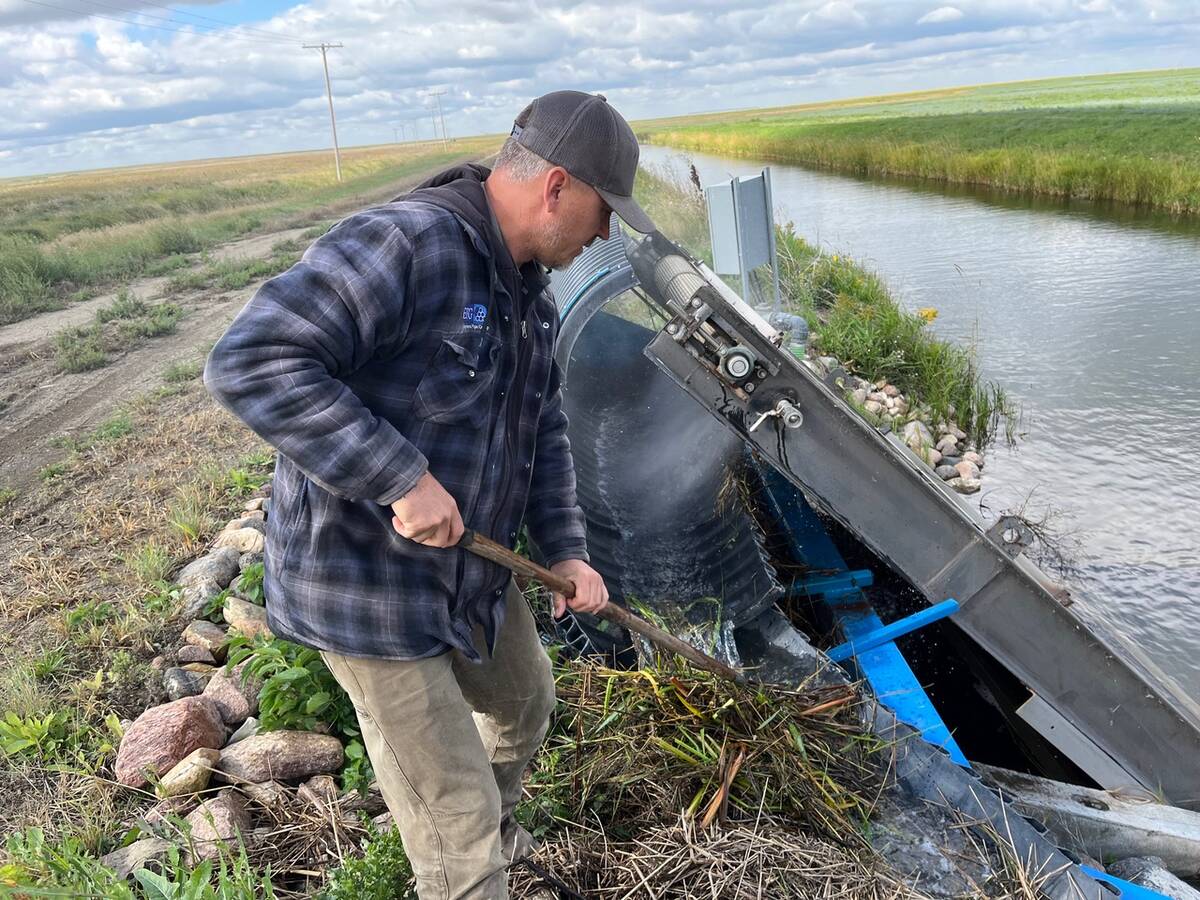U.S. president George Bush sent a clear message to agriculture secretary Ann Veneman he wants the border opened to live Canadian cattle. But Bush is not the only one weighing in on the controversial issue.
Veneman is getting an ear-full from American cattle groups that have differing opinions on the matter.
There are three big players on the national scene.
The National Cattlemen’s Beef Association consists of 33,000 individual members and a number of state cattle associations and national breed organizations, which in turn represent a further 230,000 cattle breeders, producers and feeders.
Read Also

Saskatchewan farmer uses tile drainage to manage water
The integration of both irrigation and tile drainage results in higher yields, water efficiency, improved soils and less nutrient runoff, says one producer.
“It’s equivalent to your Canadian Cattlemen’s Association,” said Harlan Hughes, an American livestock economist and professor emeritus at North Dakota State University.
The group is pushing to reopen the border and restore trade to normal, with the following restrictions:
- It would have to be done on a gradual, step-by-step manner, so as not to disrupt the U.S. cattle market.
- Canadian heifers would be permanently identified and not allowed to enter the U.S. breeding herd through feedlots.
- Canada would have to drop its trade restrictions related to anaplasmosis and bluetongue.
Another group, the Ranchers-Cattlemen Action Legal Fund United Stockgrowers of America, was founded in 1998 to launchan anti-dumping case against live cattle exports from Canada and Mexico and to establish a countervailing subsidy caseagainst Canada.
The group was successful in convincing the U.S. Department of Commerce to implement anti-dumping tariffs against Canada, which were later overturned by the U.S. International Trade Commission.
Groups at odds
R-CALF has morphed into a national voice for cow-calf producers and independent feeders and is often at odds with the NCBA. It represents more than 8,000 producers in 46 states, but most of its members are from the Northern Plain states of Montana, North Dakota and South Dakota.
“They probably wouldn’t like to be described this way, but I call them a single-issue organization,” said Hughes.
“They’re primarily opposed to any kinds of imports.”
R-CALF is pressuring the United States Department of Agriculture to keep the border closed, at least until a mandatory country-of-origin labelling system for beef has been implemented.
Earlier this month, the group scored a legal victory, using the threat of a lawsuit to convince the USDA to drop its plans to allow imports of ground and bone-in beef from Canada.
Hughes said the group has a small membership but is “vocal as heck” and carries considerable clout.
“Whenever there is any kind of discussion with any politicians, they are sitting at the table, just like NCBA is.”
Another group speaking out on the BSE issue at a national level is the American Meat Institute, an association of packers and processors whose members produce 95 percent of the beef products sold in the U.S.
The institute is lobbying the USDA to “fully re-establish trade” for cattle, beef and beef products produced in BSE minimal risk regions like Canada.
It said its members have suffered “substantial economic damage” over the past year and restoring trade will help prevent further losses.
In a recent statement, the president of the institute pointed out a conflict in existing regulations that only allow certain cuts of meat to cross the border.
“Prohibiting the importation of cattle that are 30 months of age and older, while at the same time permitting the importation of beef derived from the same animals, is intellectually inconsistent,” said James Hodges.
In addition to the national voices, some groups at the state level have been vocal on the BSE issue. One of the most outspoken is the Montana Stockgrowers Association.
Executive vice-president Steve Pilcher said the reopening of the border should be based on science rather than emotion or politics. The association is calling for a resumption of trade, but wants four conditions met before that happens:
- The CFIA must publicize the results of its investigations into the two cases of BSE.
- Canada must remove its trade restrictions related to bluetongue and anaplasmosis.
- The USDA must conduct an economic analysis of the potential impact on the U.S. cattle industry of opening the border.
- And finally, the U.S. must first restore its export markets with countries like Japan.
“I think that’s where we probably disagree (with the NCBA) a little bit, in that I think we need to restore our export markets and then look at restoring the trade with Canada,” said Pilcher.

















